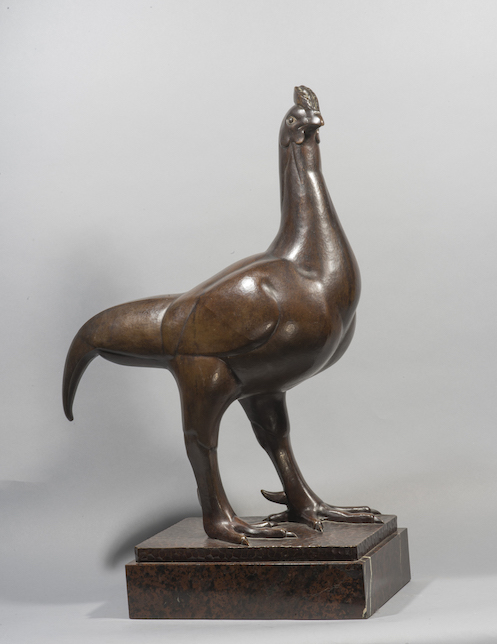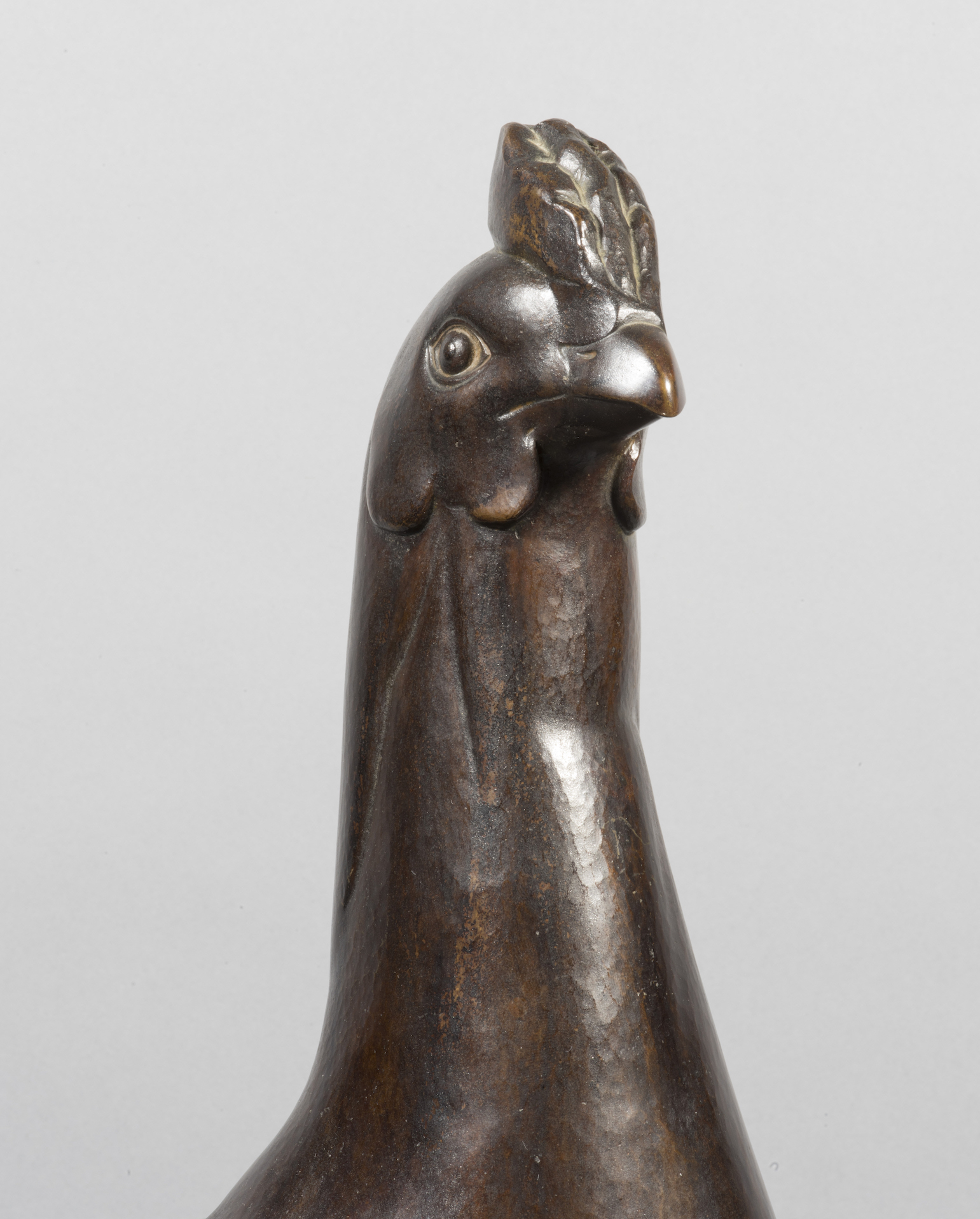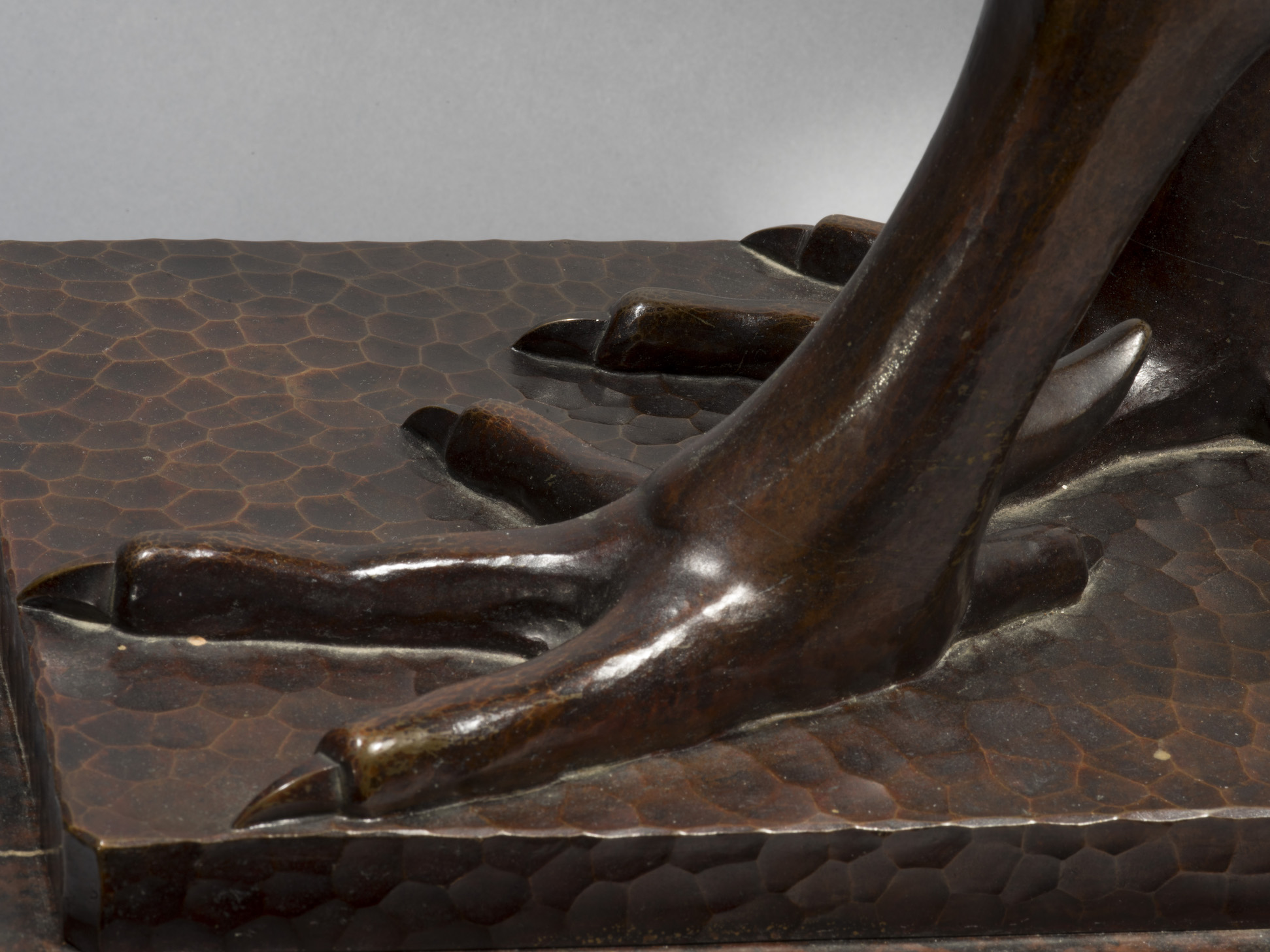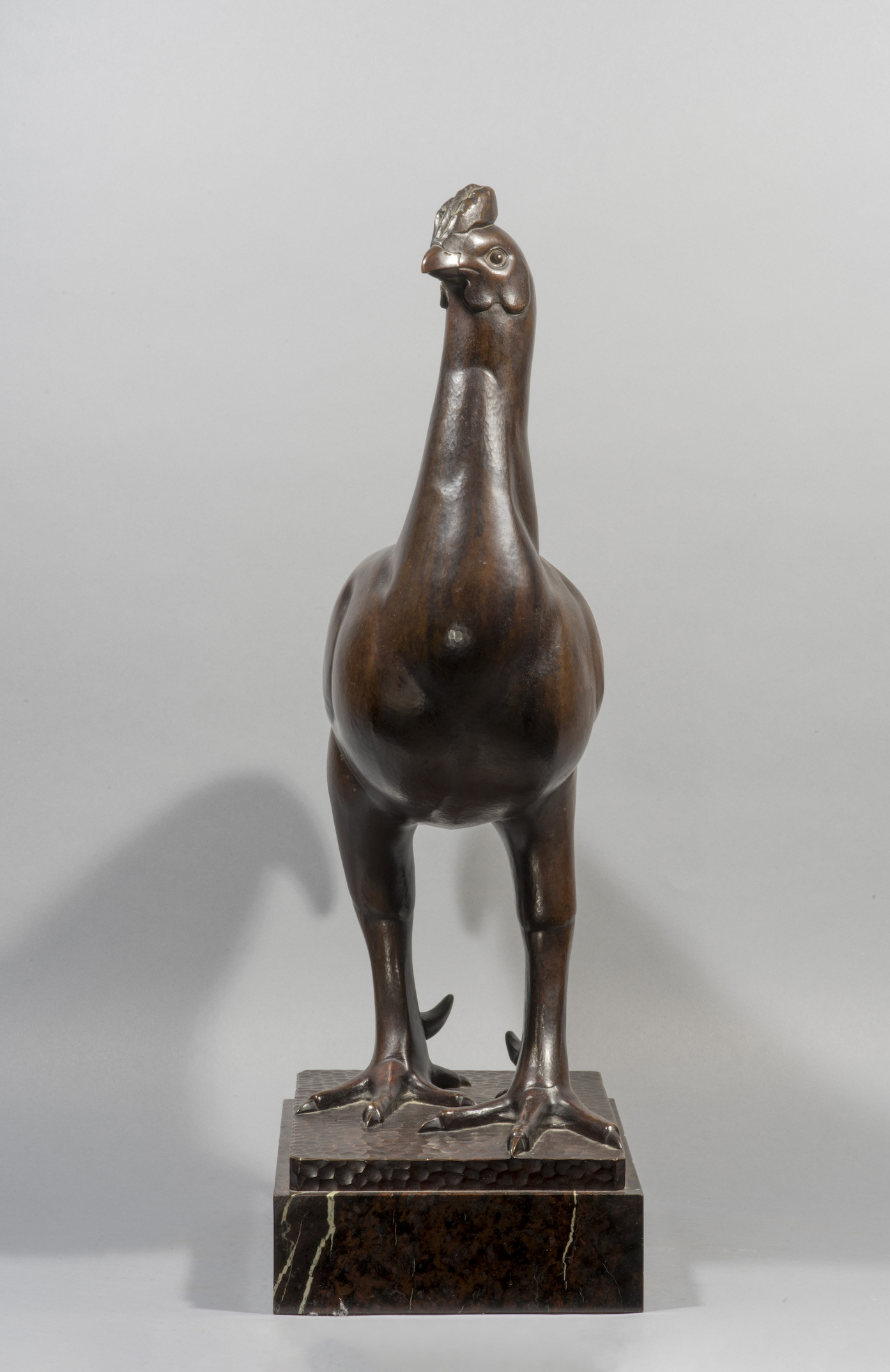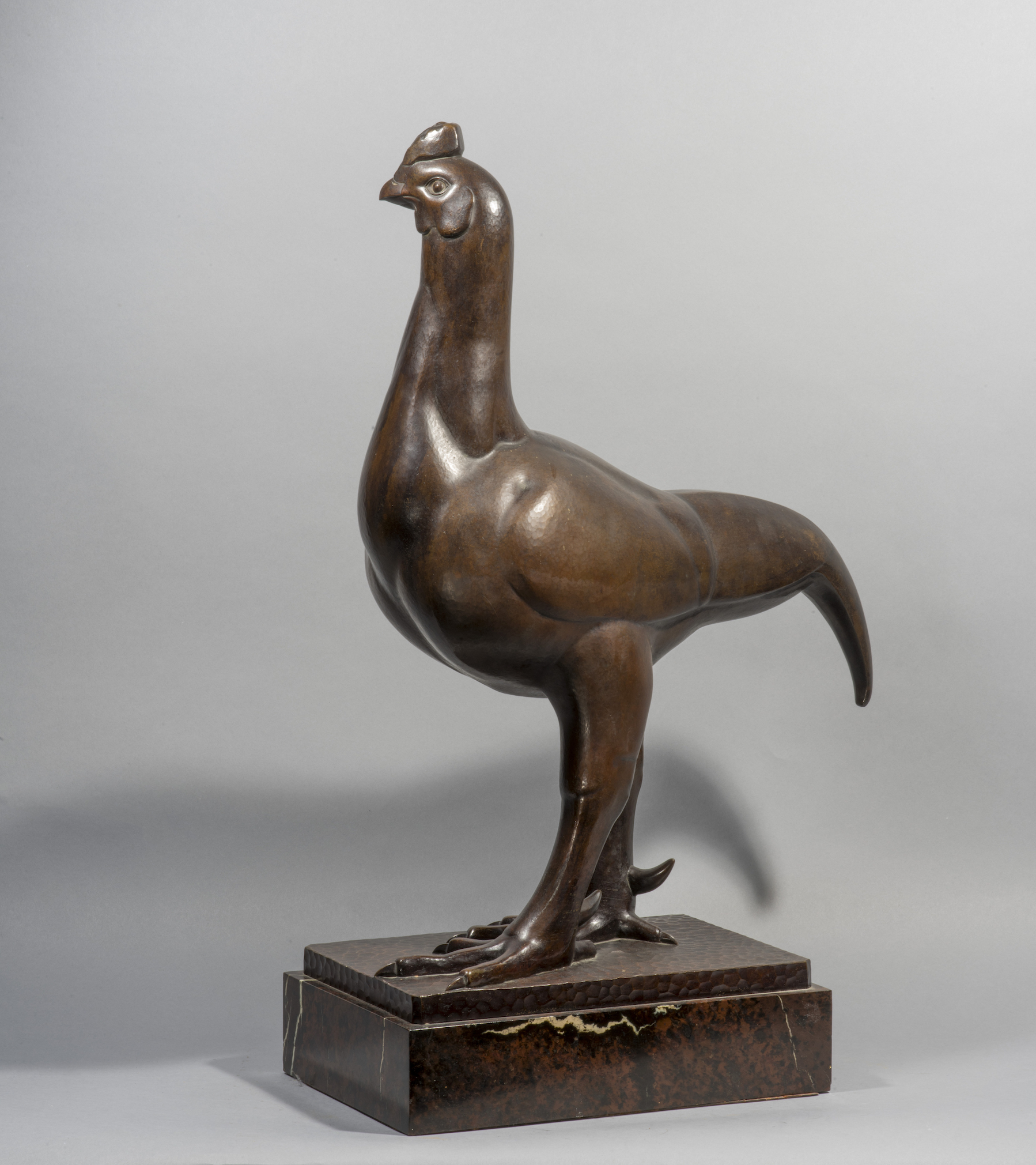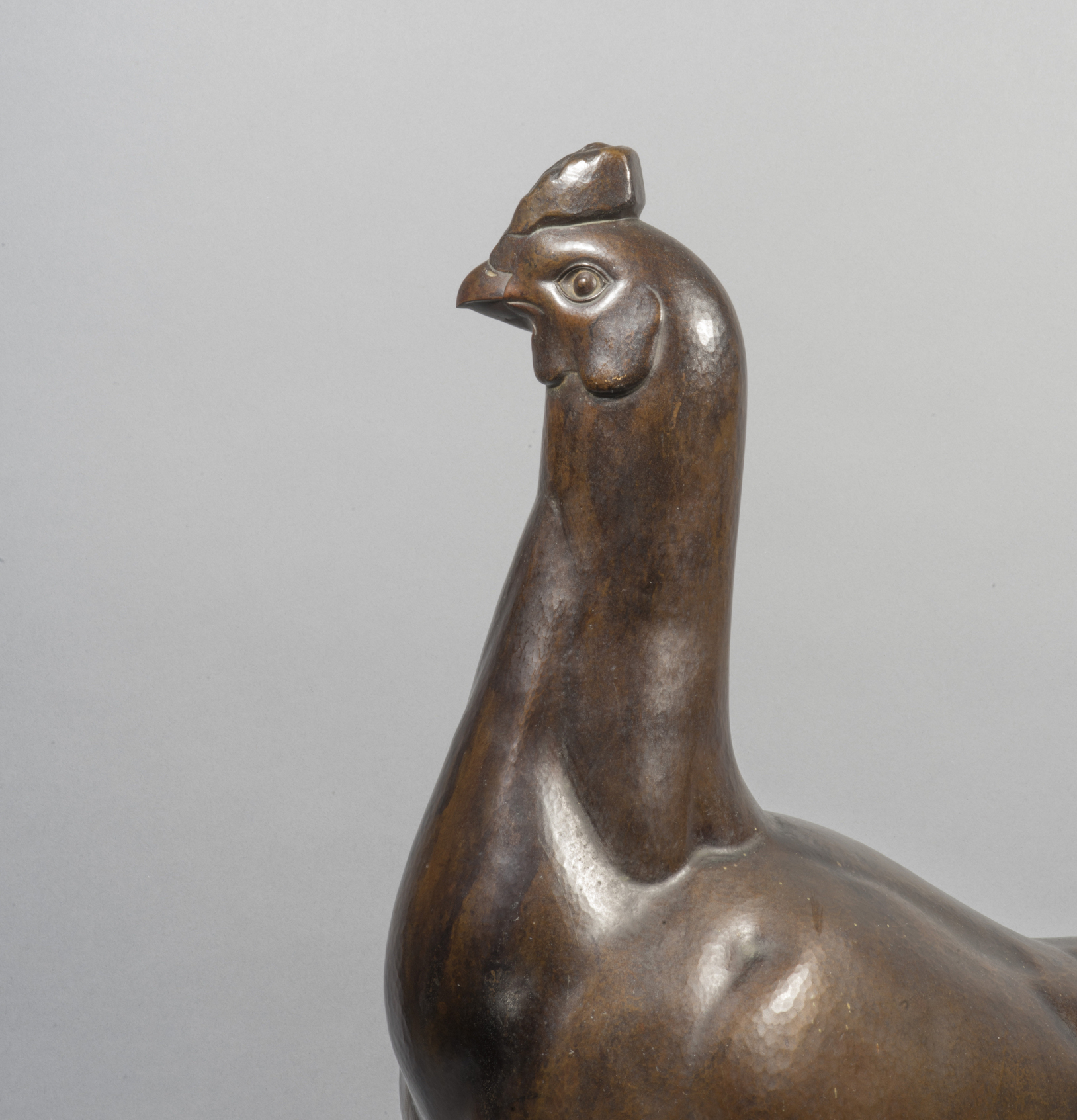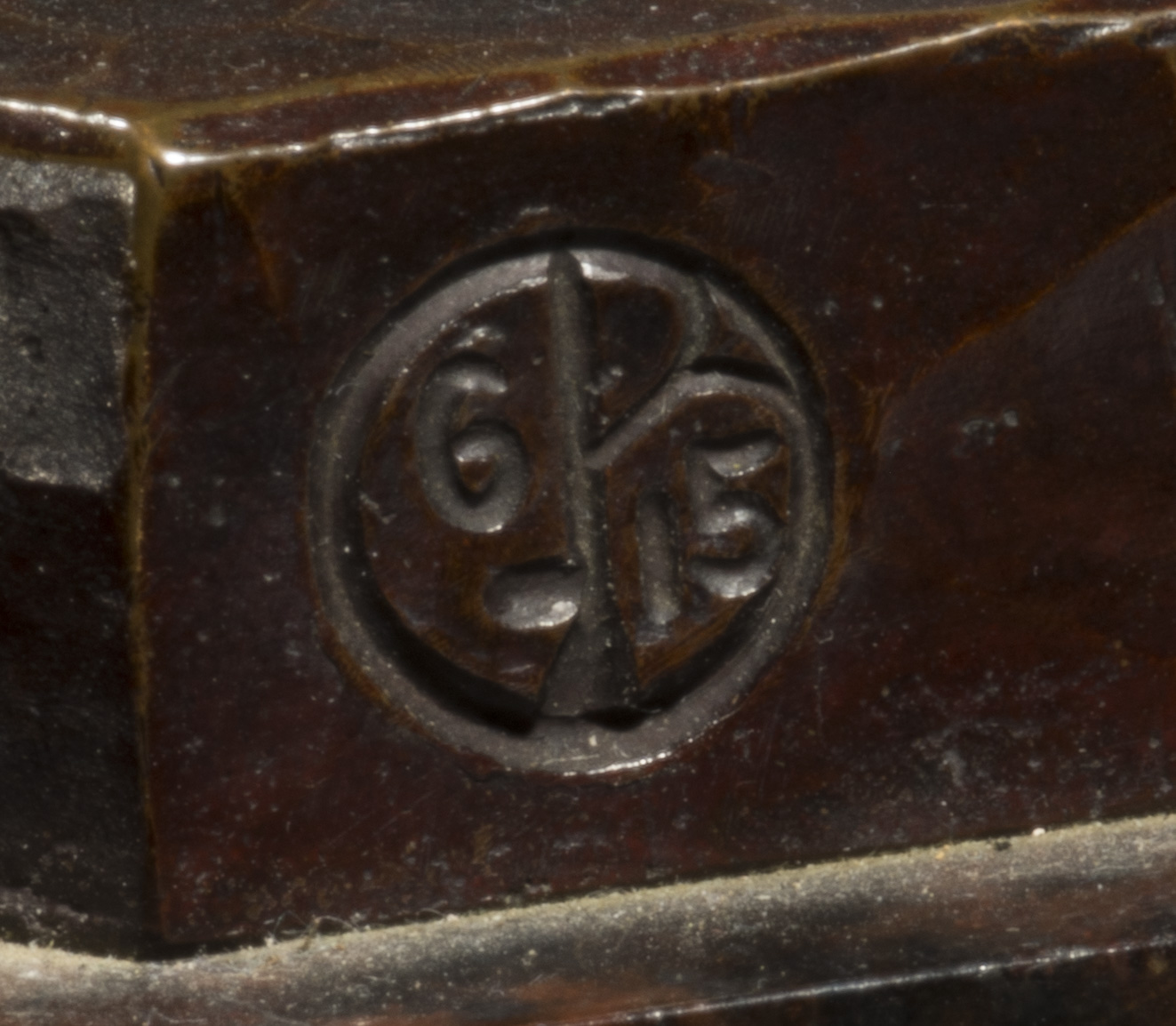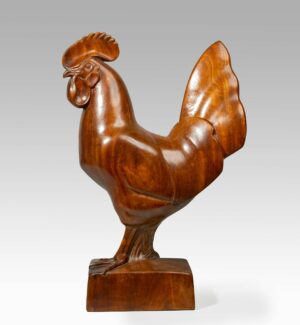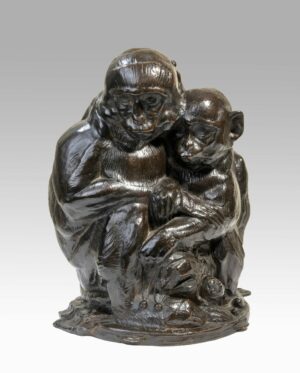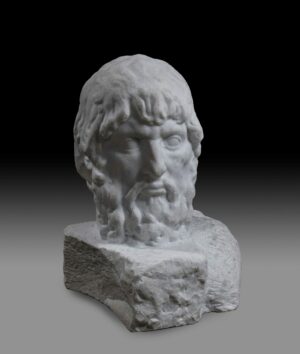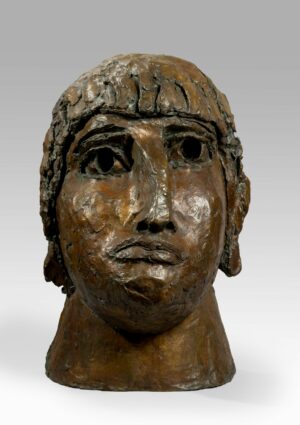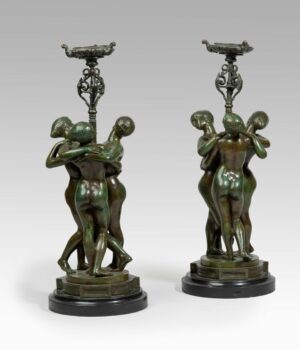Description
The Fighting Rooster model was first exhibited in wood at the Salon d’Automne in 1928. Gaston Le Bourgeois, though adept in various materials such as stone, ivory, cement, and lead foil, favored hardwood. Animals, especially those from his surroundings, served as frequent subjects in his work. However, only a few of his animal models, including the Fighting Rooster, were also cast in bronze.
A perfectionist, Le Bourgeois approached each material with respect for its unique qualities. For wood, his technique involved layering planes, whereas bronze demanded bold volumes to enhance the interplay of light and shadow. The Fighting Rooster, with its geometric structure and dynamic form, was an ideal subject for both mediums.
From the rooster’s upright head, long and muscular neck, and inclined, sculptured body framed by tightly held wings and a broad chest, to its sturdy legs with sharp spurs and a sweeping, curved tail, the composition exudes both elegance and strength. The artist’s meticulous study of the rooster allowed him to simplify its form while preserving its proud, combative expression, the quintessential “king of the farmyard.”
The bronze is crafted to evoke the gouge work of wood, achieving a delicate interplay of shadows and light that vibrates across the surface. Determined to oversee the bronze casting process, he turned to the Maison Colin, a foundry known for its innovative, contemporary approach. Colin allowed Le Bourgeois to adapt its chasing workshop and tools to suit his needs, ensuring every detail met his exacting standards.
The artist also personally supervised the patination process, using a blowtorch to achieve the rich, warm brown tones seen in this piece. Similarly, he paid close attention to the bases of his sculptures, choosing materials like marble or bronze to harmonize with the artwork’s proportions and colors. The present example numbered 6 is mounted on a mahogany obsidian base that beautifully complements its patina.
Le Bourgeois’ Fighting Rooster represents a masterful synthesis of form, material, and technique, a testament to his artistry and devotion to his craft.

